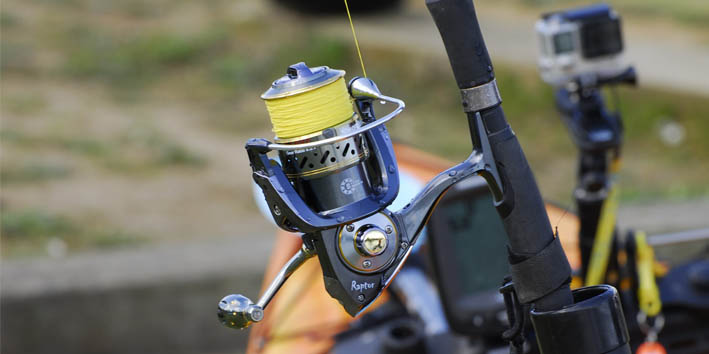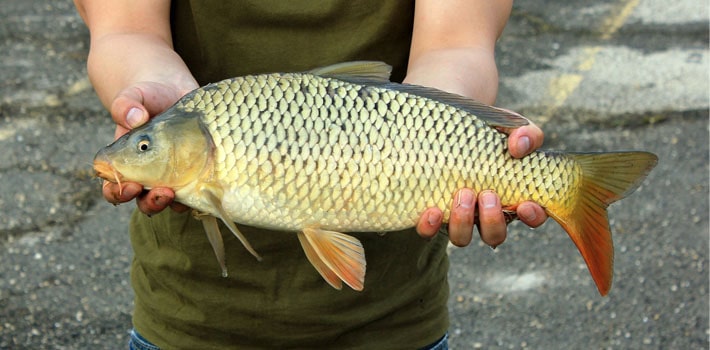You are on the boat preparing to cast your line, and as you ready your rod, you notice the hesitation in the spinning reel. This is usually caused by a line twist. Let’s find out how to spool a spinning reel successfully.
Since its introduction by a French manufacturer in 1940s, the spinning reel has offered an ingenious and hitch-free way to fishing as opposed to casting nets. However, it also features certain peculiarities that must be understood for a fulfilling fishing experience.
Line twist is a recurring problem when using a spinning reel. It prevents you from casting your line properly as the line is all tangled up in the line spool. So how do you overcome it?
Not to worry though, as we have an easy solution to this problem. The solution is to learn how to spool a spinning reel. When this is properly done, it effectively reduces your chances of getting a line twist.
Here’s the reel deal:
In the next few paragraphs, we walk you through a step by step process of how to line a spinning reel.
1) Understand Your Reel Bail Movement
The first step in lining your spinning reel is to know the direction in which your reel bail moves. This can be achieved by doing the following:
1) Hold your reel in the same orientation as when it is on a fishing rod
2) Then, slowly turn the handle in the same direction that you would when extracting bait
3) Notice the direction of the reel bail movement as this would be the same direction for lining the spinning reel
In doing the above, it is important to note that when mounted, the spinning reel hangs below the rod. Thus, ensure that you simulate this same position as if the reel is actually mounted to get the best result.
2) Understand Which Direction the Line Grips on the Filler Spool
Next, you must understand the direction of the line on the filler spool. The goal is to ensure that the filler spool moves in the similar direction with the reel bail when the line is dispensed from it into the reel bail.
Setting it in any other direction would lead to resistance when the line is reeled into reel bail which can ultimately lead to a line twist.
3) Tie the End of the Line to the Reel Spool
Once you have determined the direction of both the reel bail and the filler spool, you then tie a knot around the line spool to create a base for reeling the line. In doing this, you must observe the following:
1) First, wrap the line about the spool’s arbor
2) Then, tie an overhand knot at the tail end of the line
3) Tie another overhand knot in the tail end just an inch or a little more from the earlier knot
4) Finally, pull the other end of the line in order to test the knot's strength
4) Start the Actual Reel
After tying the knot, you can then begin to slowly reel the line into the reel spool. Here’s how to do this:
1) Introduce tension by progressing the line between two fingers from the casting hand while you reel slowly
2) If you are filling it yourself, lay the filler spool on the ground and slowly reel to line spool
3) If someone is helping you with the filler spool, a pencil should be placed in between the filler spool for easy rotation and the filler spool held in a parallel direction to the reel spool
4) Another person can also apply pressure to the line to create extra tension
The overall motto here is patience and attention. Rushing the process might have catastrophic consequences.
5)Check the Line for Twist From Time to Time
As you reel the line into the reel spool, any sign of hesitation should be a signal to stop and check for twist. If the filler spool is placed in the same direction as the direction of the reel spool, this sort of interference should be minimal.
Observe the following rules to check for twists:
1) You should always let the line go slack in checking for twists as having a firm line might reduce your chances of noticing the twist
2) If there is an actual twist, the line would automatically start unspooling from the reel spool. This is an apparent signal to stop and check again
3) Finally, you peel off the line, turn the filler spool to the other side and start over again
6) Continue Filling Appropriately
Fill the reel spool carefully about 1/8 inch of its rim. Then fill the reel into the appropriate amount.
You can decipher the appropriate amount in two ways. Your reel might have a tab or mark on it spools that denote the appropriate filling. If this is not the case, you would have to decide what is appropriate instinctively.
It is important to fill your reel with the appropriate amount of line as one of the following might occur if that is not the case:
1) If you underfill the reel, it would lead to shorter cast due to the inevitable friction of the line stroking against the reel spool top flange
2) If you overfill it, a lot of water may be absorbed by the line when it becomes wet to slip past the flange, and this can cause resistance whenever you cast the line
7) Slash the Line Off the Filler Spool
The final step is to cut the line when you are satisfied (either by instinct or by indications from your reel) that you have filled the right amount of line.
1) Place a rubber band about the reel spool to ensure the line is in place if you are not fishing immediately
2) Also, ensure that you leave enough line hanging from the rod so that you can pull when the time comes
Conclusion
Understanding how to spool a spinning reel would consequently improve your overall fishing experience.
To summarize, ensure that in following every step, you pay attention to detail as skipping a step or doing it in a rush might render the entire process useless.





